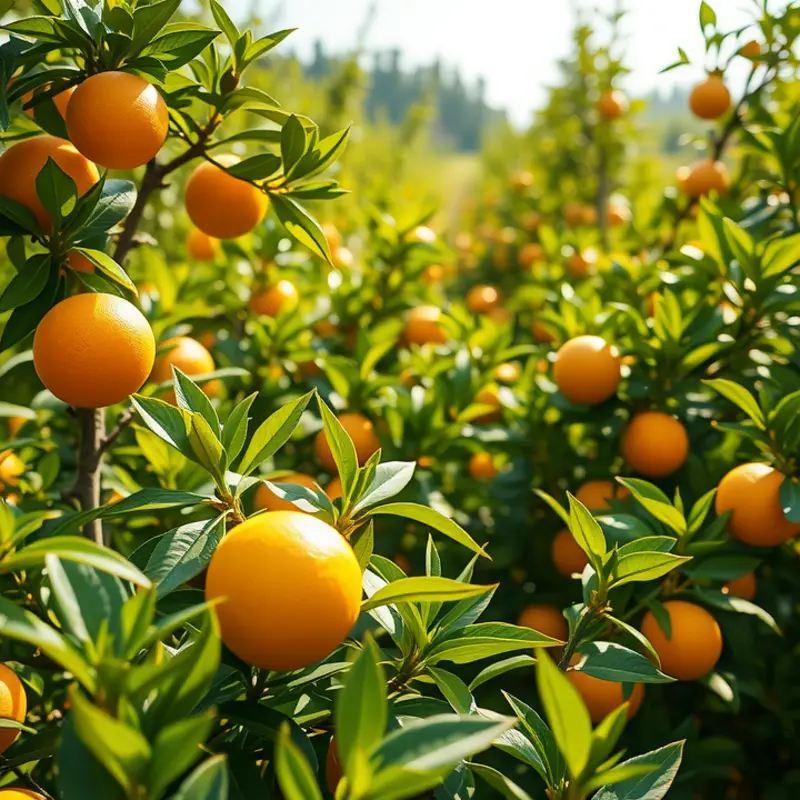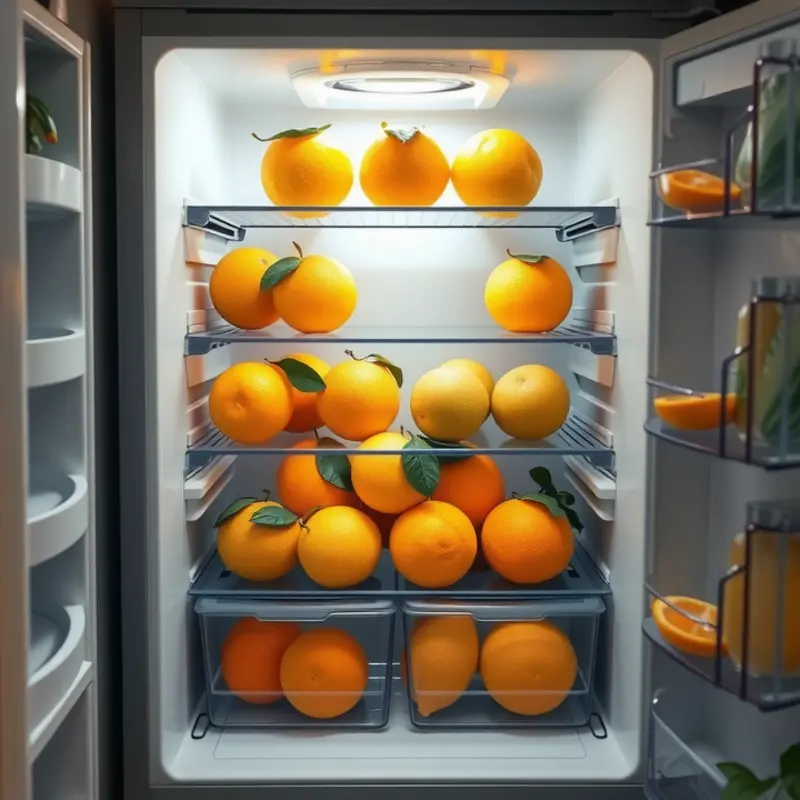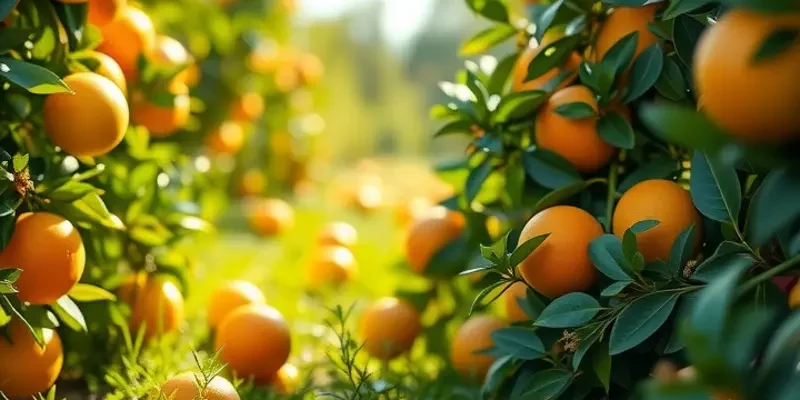Proper citrus storage is essential for maximizing freshness, flavor, and shelf life. By understanding how to handle different types of citrus fruits and employing best practices, you can significantly reduce waste and enhance your food management at home. Get ready to learn the optimal methods for storing oranges, lemons, limes, and grapefruits to ensure they remain juicy and delicious.
Selecting the Right Citrus

Choosing the right citrus fruit means more than just picking one off the shelf. It’s about understanding how your selection will impact the longevity and flavor of your fruit. Whether you’re a fan of tangy oranges or juicy grapefruits, selecting high-quality citrus lays the groundwork for fresher storage and ultimately less waste.
Color: Start your selection process with color. The ideal citrus fruit has a vibrant and consistent hue—this indicates ripeness and readiness to provide its best flavor. For oranges, look for a bright, deep orange color. Lemons and limes should be vivid yellow and green, respectively. Keep in mind that some citrus fruit, like grapefruit, can vary in color, but ensure that the skin is free from dullness or brown patches, which can suggest age or damage.
Firmness: Firmness is an equally important aspect. Gently squeeze the fruit; it should feel firm yet yield slightly under pressure. Avoid fruits that feel hard, as this suggests underripeness and a lack of juiciness. Conversely, steer clear of overly soft fruits, particularly those that feel squishy, as they are likely overripe and may spoil more quickly.
Blemish-Free Surfaces: Examine the surface of your citrus for blemishes and imperfections. Small, superficial blemishes can often be cosmetic, but large, deep imperfections may indicate damage that compromises the fruit’s quality. A smooth, shiny surface typically signals freshness. Feel the skin to check for any raised areas or wrinkles—these suggest the fruit is drying out and losing moisture.
Weight and Juiciness: Heft can be a surprising but excellent indicator of quality. Heavier fruits usually contain more juice, the very essence we seek in citrus. When you hold the fruit, it should feel dense for its size. This density correlates with juiciness, promising rich flavor and an extended shelf life once stored correctly.
Fragrance: Although not always possible in a market setting, smelling the citrus can provide clues about its quality. Fresh citrus often exudes a light, pleasing aroma through its skin. This fragrance signifies ripeness and good flavor.
Selecting quality citrus is the first crucial step in ensuring your storage efforts pay off. Proper selection means that when your fruits do make their way to your fridge or countertop, they bring optimal taste and a longer shelf life.
Every choice you make impacts how long your fruit will stay fresh and nutritious in your kitchen. By integrating careful selection with smart storage tactics, it’s possible to minimize waste and maximize enjoyment of these delicious fruits. For more tips on reducing food waste and improving sustainability in your kitchen, consider exploring educational eco-friendly eating strategies.
Storing Citrus to Maximize Freshness

The vibrant colors and refreshing taste of citrus fruits make them a staple in many kitchens. However, without proper storage, these fruits can quickly lose their juiciness and flavor. Understanding the optimal conditions for storing citrus can significantly extend their shelf life, allowing you to enjoy their full benefits.
Room Temperature vs. Refrigeration
Whole citrus fruits, such as oranges, lemons, and limes, can be stored at room temperature if they’ll be consumed within a week. Ensure they are kept in a well-ventilated area, away from direct sunlight or heat sources, to help maintain their freshness.
For longer storage, refrigeration is ideal. Place your citrus fruits in the crisper drawer, set to low humidity, to prevent them from drying out. This helps preserve their moisture content and ensures they remain juicy and flavorful for up to four weeks.
Storing Cut Citrus
Once citrus fruits are cut, their shelf life shortens considerably. Store cut citrus in an airtight container and refrigerate immediately. This minimizes exposure to air and bacteria, preserving both flavor and texture. When possible, use reusable glass containers for storage, which are sustainable and prevent the fruit from absorbing odors from other foods. See tips for safely reusing your glass containers here.
Ventilation and Humidity
Proper ventilation is crucial for preventing mold growth on citrus fruits. Avoid storing them in tightly sealed plastic bags as this traps moisture and creates an environment conducive to mold. Instead, use mesh or perforated bags that allow for airflow.
Humidity also plays a significant role in citrus preservation. Too much moisture can lead to mold, while too little can cause the fruit to shrivel. Balance is key. In the fridge, you can control humidity by adjusting the crisper drawer settings. If you’re storing citrus at room temperature, consider placing a small bowl of water nearby to maintain a consistent moisture level.
Avoiding Common Mistakes
A common error is washing citrus fruits before storage, which can introduce excess moisture that promotes decay. Instead, wash them just before use. Additionally, avoid stacking citrus fruits, as pressure can cause bruising and speed up deterioration. Use a single layer in storage to prevent damage.
By understanding and implementing these simple storage techniques, you can significantly extend the life of your citrus fruits. Not only does this ensure you enjoy them at their peak flavor and juiciness, but it also plays a part in reducing food waste in your home.
Final words
Storing citrus fruits correctly is vital for maintaining their freshness and minimizing waste in your kitchen. By selecting quality fruits and understanding the best storage conditions, you can enjoy vibrant, delicious citrus long after purchase. Remember, good practices start at the grocery store when choosing your fruits and continue at home as you store and use them. Adopting these simple tips ensures that your citrus remains a delightful addition to your meals and snacks.







